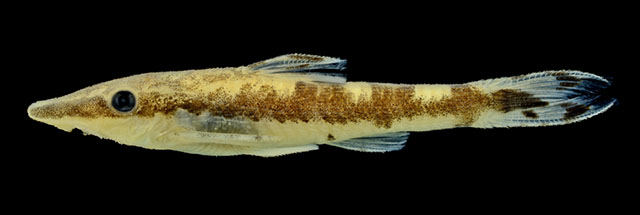|
Dorsal spines (total): 2-2; Dorsal soft rays (total): 7-7; Anal spines: 1-1; Anal soft rays: 5-5. This species is distinguished from its congeners by the following set of characters: having two usually distinct, somewhat triangular dark brown speckles lateral to the anal-fin origin (vs. speckles lateral to anal-fin origin absent or, when pigmentation present, weak and sparsely distributed forming inconspicuous blotches); differs from C. karipuna, Hisonotus acuen, H. chromodontus by having paired rostral plates (vs. rostral plate single); differs from C. oliveirai, C. piracanjuba, H. acuen, H. bockmanni, H. chromodontus by having more numerous lateral abdominal plates 7-8 (vs. 3-5 lateral abdominal plates); differs from C. coxipone, C. luteofrenatus, C. piracanjuba, C. sabaji, C. sagarana by having a single series of large median abdominal plates (vs. usually 3 or more regular series of median abdominal plates, or small plates irregularly distributed); differs from C. coxipone, C. sagarana by having anterior margin of snout pointed (vs. rounded); differs further from its congeners by having more dentary teeth 17-22 (vs. 5-1 in insperatus, 5-12,sabaji, 7-16 coxipone, 10-15 oliveirai, 11-18 itaim, 10-16 tukana, 4-7 paresi) and by having more pemaxillary teeth 19-25 (vs. 6-14 in insperatus, 7-13 sabaji, 7-15 coxipone, 9-18 oliveirai, 11-18 itaim, 12-18 tukana); also differs further in several morphometric proportions of the body and head, mostly involving prepelvic, prepectoral, and preanal distances, head and cleithral width, caudal peduncle length, and dorsal-fin spine (Ref. 119375). |

